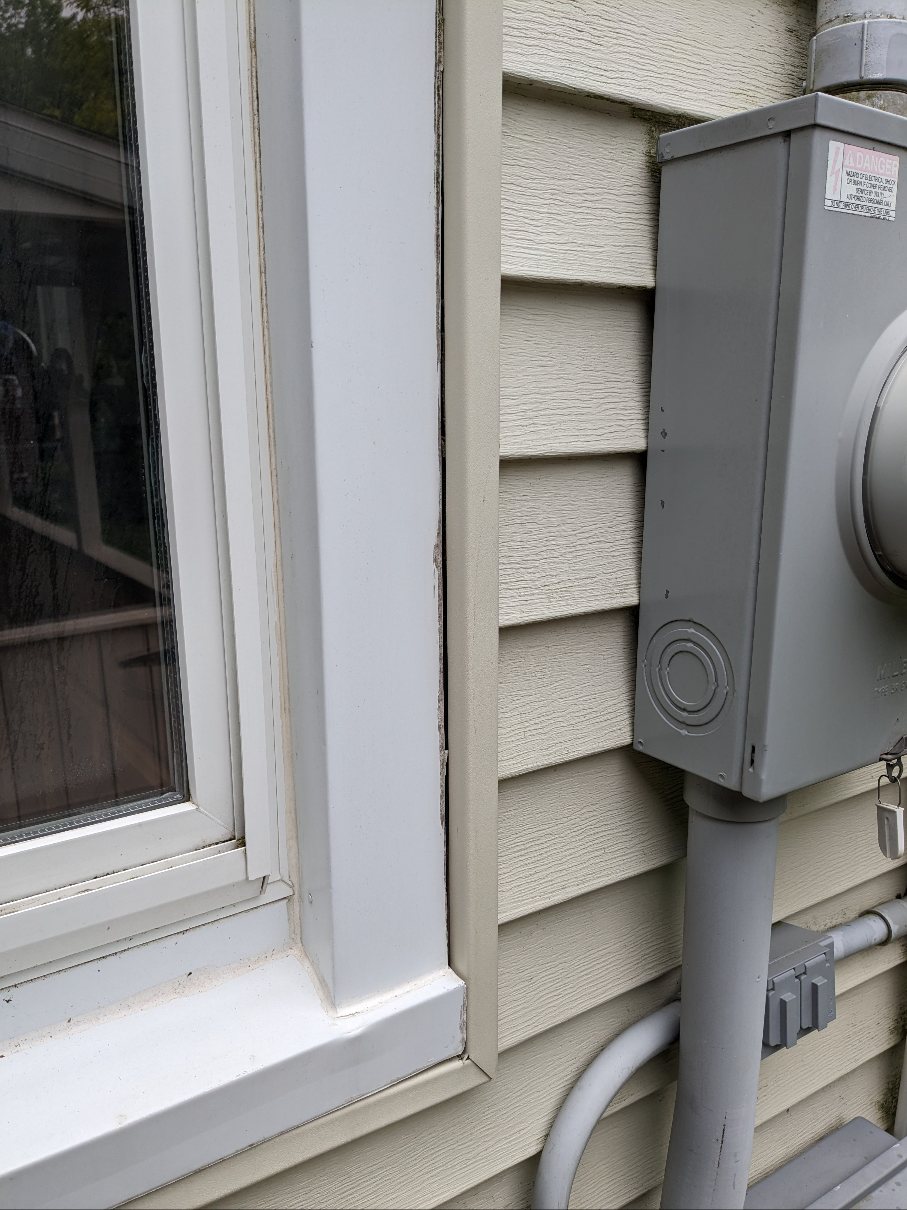So I live in a 1950s house that ha wood siding which some time ago was covered with vinyl siding. There are some gaps around the window, where if I spread it a bit, I can see the old wood siding. It looks like the installer might have caulked the windows originally, but it has since failed. Should I caulk between the window trim and almond colored vinyl? If so, should I do top, side, and bottom? Or leave the bottom un-caulked. See pictures.
2 Answers
No.*
As I've said many times before on this site, vinyl siding is not waterproof. The housewrap or other "drain plane" behind it is (or us supposed to be). The flashing tape I assume is around your windows is. The siding is really an aesthetic thing and an initial weather barrier.
That out of the way, rarely would I caulk vinyl, for a few reasons:
Vinyl moves with temperature change. A lot. It tends to tear caulk loose over time, or the caulk causes the vinyl to buckle. They don't play well together.
It looks like a**, completely undermining the clean-lined appearance intended.
It makes your house no longer maintenance free. Now you have something at play that needs periodic upkeep (and it'll look worse each time).
Finally, it's false security. Water will get behind those carefully crafted seals, and now you have more entrapment, actually accelerating decay.
* This all assumes a properly installed barrier behind the siding, as described above. If you don't have that, all bets are off. Caulk won't help you.
-
Does this answer change at all given there is wood plank siding beneath the vinyl? From what I can it's wood plank, then some board foam, then the vinyl siding. So no explicit house wrap between the wood siding and vinyl.– PandaCommented Jun 3 at 16:57
-
1No, because as I mentioned this is false security. You won't keep much out with a bead of caulk on the surface of what's a hollow three-dimensional thing. Remember that the other side of the J-channel is essentially the same situation. Commented Jun 3 at 18:34
-
To your point of entrapment, so is adding caulk really likely to make the situation worse? Is that because it restricts a little air flow or something else?– PandaCommented Jun 4 at 19:52
-
I can't say from my chair. It depends on many factors. It could actually help somewhat in your case. Or not. You'll have to look things over and make a decision. Commented Jun 4 at 20:22
I would caulk all the perimeter. I would also recommend using a white polyurethane based caulk but handling it, keeping the caulk line neat will be tricky.
I do not see the top, but typically I do not caulk that. But I might knowing how the pieces are joined together at the top, since if water does get in at the top, and the top is caulked in a specific way, it will keep the water in, instead of letting it drain out. My gut feeling is, especially if the vinyl is set back from the edge of the window trim where the water can set on the trim and run under the vinyl.
Caulk now rather than later, since any water that does get driven in by wind, etc, once inside, will take a while for it to dry, compounding the problem of excess moisture and the wood decaying because of it.
Do clean the surfaces, yes you will need water to rinse the surfaces completely. Check what kind of cleaners will work, maybe Simple Green, or something that will clean all surfaces. Let the surfaces dry completely, the little water that gets in is a trade off for properly getting it clean.
Caulking it properly is most important at this time since it has been exposed to contaminates for a long time, that will keep the caulk from properly adhering.




